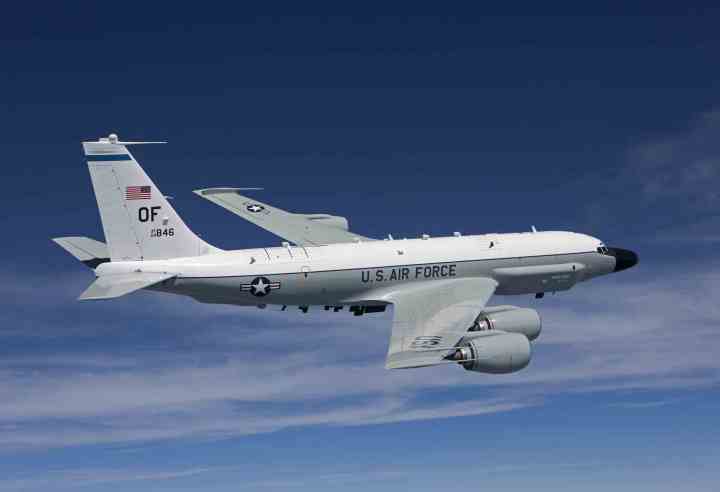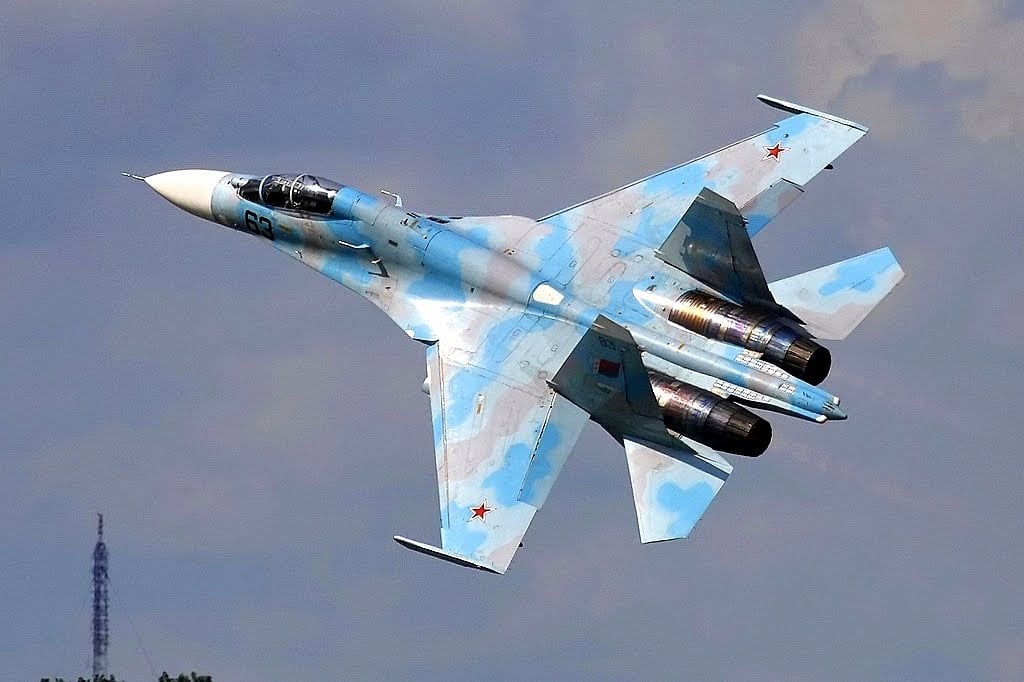
An American military surveillance aircraft barely escaped a deadly mid-air collision with a Russian fighter jet in the skies above the north Pacific, further inflaming tensions between the former Cold War adversaries.
The incident reportedly took place in late April, 60 miles off the Russian coastline, where the Air Force RC-135 intelligence, surveillance and reconnaissance aircraft was conducting routine operations in the region, Defense Department officials disclosed this week.
The American aircraft was flying in international airspace when it encountered a Russian Su-27 fighter over the Sea of Okhotsk. The Air Force plane took evasive maneuvers to avoid hitting the Russian jet, which reportedly came within 100 feet of the U.S. aircraft.
Pentagon officials have characterized the incident as a blatant attempt to disrupt or interfere with U.S. operations in the area, noting the Defense Department is reaching out to Moscow to gather more details on the incident.
The near miss collision comes amid rising tensions between Washington and Russia, over Moscow’s continued military aggression in Crimea and eastern Ukraine. The previously unreported event over the Okhotsk was the second time that month U.S. and Russian forces came into close contact.
That same month, a Russian Sukhoi SU-24 Fencer made repeated passes over USS Donald Cook (DDG-75), a ballistic missile destroyer, while it was conducting operations in the Black Sea.

The Fencer reportedly made 12 passes on the destroyer ignoring multiple attempts by the ship’s crew to contact the fighter’s pilot. While Donald Cook never engaged the jet during that incident, the Fencer dropped down to within 1,000 yards of the U.S. warship at an altitude of 500 feet, according to reports at the time.
“We’ve seen the Russians conduct themselves unprofessionally and in violation of international norms in Ukraine now for several months, and … these continued acts of provocation and unprofessionalism do nothing to help de-escalate the situation in Ukraine, which is what we’ve called on the Russians to do,” Pentagon spokesman Col. Steve Warren said at the time.
The Pentagon’s decision to release details of the near collision comes as the White House unveiled plans to significantly bolster U.S. military presence and investment in Europe.
On Tuesday, President Obama unveiled a plan to reinvest over $1 billion in U.S. military personnel and equipment into efforts to bolster regional security with Washington’s allies in Europe.
The plan would finance increased military-to-military exercises between U.S. forces and their European counterparts, according to Obama. The funds would also pay for the creation of more stockpiles of American weapons and equipment in Europe. These so-called prepositioned stockpiles will ensure U.S. and allied forces can have quick access to American military hardware, should regional tensions boil over into open conflict.
While Obama never mentioned Moscow by name during Tuesday’s announcement, the new European security plan could be seen as a sign the administration is moving more toward military options to resolve the crisis in Ukraine.
On Wednesday, Obama met for the first time with newly-elected Ukrainian president Petro Poroshenko, in a public show of support for the country’s leadership. U.S. diplomats and military officials met with members of Ukraine’s newly-minted government, to get an assessment of the fluid security situation on the ground.





